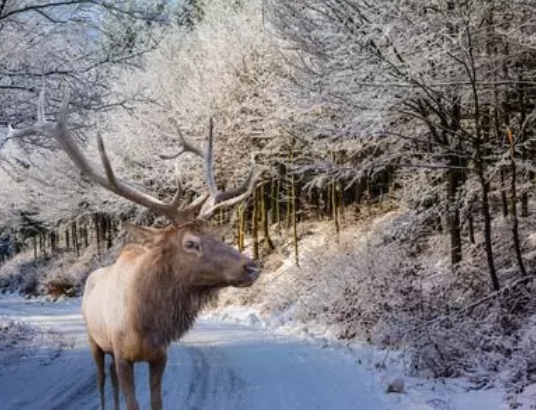The majestic elk, also known as Cervus canadensis, is the largest species of deer in North America. These impressive creatures can be found in a variety of habitats across the continent, from the Rocky Mountains to the forests of the Pacific Northwest.
Habitat and Range
Elk are adaptable animals that can thrive in a wide range of habitats, including grasslands, forests, and mountains. They are most commonly found in western North America, where they roam across the vast wilderness of states like Colorado, Wyoming, and Montana. Elk can also be found in parts of Canada, including British Columbia and Alberta.
Physical Characteristics
Male elk, known as bulls, are easily distinguished by their massive antlers, which can measure up to four feet in length. These antlers are shed and regrown each year and are used during mating season to establish dominance and attract females. Female elk, known as cows, do not have antlers but are still impressive animals, with sleek bodies and graceful movements.
Behavior and Social Structure
Elk are social animals that typically live in herds, with a dominant male leading the group. During mating season, known as the rut, bulls will compete for the attention of females by bugling, or vocalizing loud, eerie calls. The strongest bulls will earn the right to mate with the cows in the herd, ensuring the survival of their genetic line.
Conservation and Management
Despite their size and strength, elk face threats from habitat loss, hunting, and competition with livestock for resources. Conservation efforts, including habitat preservation and controlled hunting programs, are helping to ensure the survival of these magnificent animals. By monitoring population levels and implementing sustainable management practices, wildlife officials can help elk thrive in their natural habitats.
In conclusion, the majestic elk is a symbol of the untamed beauty of North America’s wilderness. With their impressive size, strength, and grace, these animals inspire awe and admiration in all who have the privilege of seeing them in the wild. By working together to protect their habitats and manage their populations responsibly, we can ensure that future generations will continue to marvel at the sight of these magnificent creatures.

